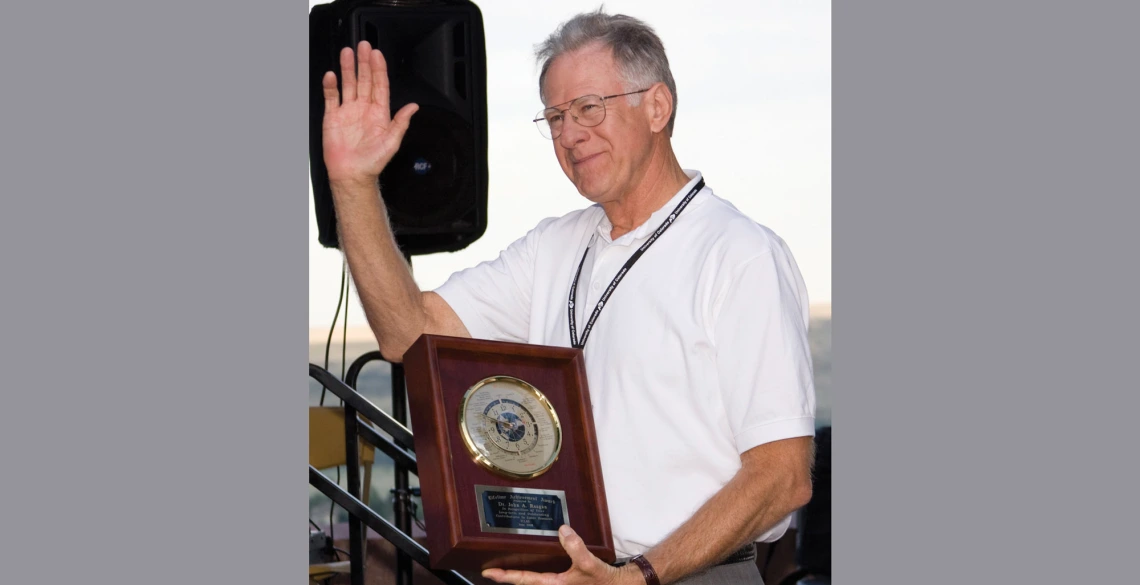John Reagan Gets Lifetime Achievement Award for Laser Atmospheric Work
Lidar expert who worked on NASA CALIPSO Mission honored for outstanding contributions in his field.

John Reagan, professor emeritus in the Department of Electrical and Computer Engineering, accepts his Lifetime Achievement Award June 27 at ILRC 24 in Boulder, Colo.
The International Coordination-group for Laser Atmospheric Studies (ICLAS) has honored John Reagan, professor emeritus in the Department of Electrical and Computer Engineering, with a Lifetime Achievement Award.
Professor Reagan received the award June 27 at the 24th International Laser Radar Conference (ILRC) in Boulder, Colo., where he presented a paper and a poster, and where the ILRC was celebrating its 40th anniversary. Professor Reagan attended the very first ILRC, also in Boulder, in 1968.
The Lifetime Achievement Award was inaugurated in 1992 and is given to those who have become international leaders and contributors to lidar research over a sustained period. Their contributions represent the seminal work in lidar research and become the foundations of the field.
Lidar stands for light, or laser, detection and ranging. It is an optical remote sensing technology that measures properties of scattered light to determine the range or other properties of a distant target.
NASA's Highest Honor
Professor Reagan in 2005 received NASA’s Distinguished Public Service Medal, the highest honor that NASA awards to researchers who are not federal government employees. NASA’s website describes award recipients as “individuals whose distinguished accomplishments contributed substantially to the NASA mission. The contribution must be so extraordinary that other forms of recognition would be inadequate.”
Professor Reagan was selected to receive the award in recognition of what NASA describes as his “outstanding contributions to the advancement of active and passive atmospheric optical remote sensing techniques, which are critical toward understanding the optical properties of aerosols and their impact on the climate.”
The NASA mission that Reagan contributed to was the Cloud-Aerosol Lidar and Infrared Pathfinder Satellite Observation, or CALIPSO, satellite, which was launched in 2006 and is providing new insight into the role that clouds and atmospheric aerosols play in regulating Earth’s weather, climate, and air quality. CALIPSO is a joint U.S. and French satellite mission with an expected 3-year lifetime.
NASA also awarded the CALIPSO science team, of which Professor Reagan is a member, its Group Achievement Award in 2007. Professor Reagan said of CALIPSO: “It is still performing quite well on its first laser, and it still has a backup laser. In anticipation of CALIPSO being able to continue operation for several more years, a mission extension proposal for three more years is now in preparation.”

